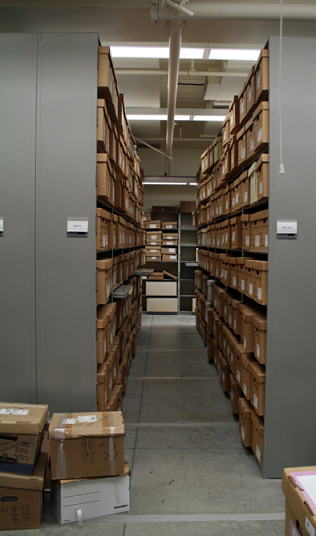eDiscovery Daily Blog
eDiscovery Throwback Thursdays – Collecting Documents

In 1978, I took my first job in litigation, with the law department of a Fortune 100 corporation headquartered in New York City. I was one of a team assembled to collect responsive documents to be produced in a major antitrust litigation. The documents were located in the corporation’s office and warehouse facilities around the country. While the process of collecting documents varied from case to case, this project was representative of the general approach to collecting documents in large-scale litigation. Let me describe how it worked.
Before travelling to a facility, reviews of custodian files were scheduled, central files to be reviewed were identified, and indices of boxes of archived materials in warehouses were reviewed. We coordinated with an on-site administrator to ensure that the supplies we needed would be ready (boxes, manila file folders, pads, stickers, markers, etc.), and we made arrangements for a temporary photocopy operation to be set-up on site.
Upon arrival at an office facility, we each went to our first assigned custodian office — and with empty archive boxes on hand, we’d start the review. We’d put numbered stickers on every file cabinet drawer and desk drawer to be reviewed. We’d label the outside of an archive box with the custodian’s name. Upon finding a responsive document, it was pulled out, an “out card” was put in its place in the original file (we wrote the number of pages of the document that was removed on the out card). We created a file folder labeled with the number of the file cabinet/desk drawer, followed by the same title on the file from which the document was removed, and we placed the document in the folder, which went into the archive box. An entire office was reviewed like this, and when we finished an office, we labeled each box with “1 of N”, “2 of N” and so on.
The next step was photocopying, which was quite an involved operation. Most of this was ‘glass-work’ – that is, stacks of paper were not fed into the machine for bulk photocopying; rather, documents were photocopied one-by-one, by hand. This was necessary because staples, paper clips, and binder clips had to be removed, post-it notes had to be photocopied separately, spiral bound materials needed to be un-bound, and so on. A photocopy operator removed a document form an archive box, did the required preparation, made a photocopy, reassembled the original and put it back in the archive box, assembled the photocopy to match the original and placed it in a second archive box labeled the same as the first, and within the box, in a folder labeled the same as the original. You get the picture.
After photocopying, a second operator did a quality control review to ensure that everything copied properly and nothing was missed. Originals were returned to the document reviewer to re-file, and the copies – which were now the ‘original working copy’ for purposes of litigation – were sent on to the next step… document numbering. A sequential number was applied to every page using either a Bates stamp machine or a number label. After numbering, documents were boxed for shipping.
After reviewing the office files, we usually moved on to a warehouse facility at which we used the same approach. For the most part, the warehouse reviews were unpleasant. Very often there was inadequate heat or air conditioning, poor ventilation, uncomfortable furniture, and lots of dust. On the bright side, we got to wear jeans and t-shirts to work, which was unheard of in the days before ‘business casual’ and ‘casual Friday’ were the norm.
This operation was a pretty routine document collection project. There was, however, one thing about this case that wasn’t routine at all. After numbering, these documents were shipped to a litigation support service provider for document coding. This was one of those rare, bet-your-company cases for which a database was built. In the next few blog posts in this series, I’ll describe the litigation support industry and a typical litigation support database.
Please let us know if there are eDiscovery topics you’d like to see us cover in eDiscoveryDaily.
Disclaimer: The views represented herein are exclusively the views of the author, and do not necessarily represent the views held by CloudNine Discovery. eDiscoveryDaily is made available by CloudNine Discovery solely for educational purposes to provide general information about general eDiscovery principles and not to provide specific legal advice applicable to any particular circumstance. eDiscoveryDaily should not be used as a substitute for competent legal advice from a lawyer you have retained and who has agreed to represent you.
